Notable Projects conducted by participation of our Team Members
A. Metallic Minerals Exploration Projects

The Arabian-Nubian Shield (ANS), dating from the Neoproterozoic era, is rich in metallic mineral resources. The ANS spans several countries in northeastern Africa and has significant rock exposures which host world-class gold and base metal deposits. Exploration efforts by our team members in Geological Survey of Ethiopia and private companies have led to advanced projects and some active mining operations. The ANS is considered underexplored, offering substantial opportunities for mineral discovery and economic development in the region.
Gold and Base Metals exploration in Greenstone belts
From 2012 to 2014, Ethio Gibe Canada Mining PLC launched extensive exploration activities covering a broad spectrum from initial reconnaissance to semi-detailed exploration. These efforts marked significant strides in selecting prime target areas for detailed exploration across various key regions. The northern greenstone belt became a focal point, with the Shiraro Project standing out as a major initiative. Similarly, the western greenstone belt saw targeted exploration in Kurmuk, Dul, and Ashashire, Nejo localities, highlighting the region’s potential. These meticulous efforts ensured a systematic approach to identifying and evaluating mineral resources.
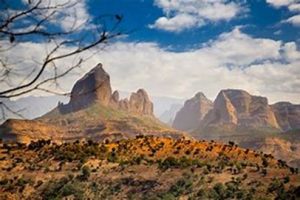 In the southern greenstone belt, detailed exploration activities zeroed in on the Dawa and Moyale areas. This comprehensive exploration program spanned an impressive area of 500 square kilometers, underscoring the scale and ambition of the project. By identifying promising sites for further detailed exploration and resource evaluation, Ethio Gibe Canada Mining PLC laid a strong foundation for future development. The systematic and methodical approach taken during these years has paved the way for continued advancements and strategic growth in Ethiopia’s mining sector.
In the southern greenstone belt, detailed exploration activities zeroed in on the Dawa and Moyale areas. This comprehensive exploration program spanned an impressive area of 500 square kilometers, underscoring the scale and ambition of the project. By identifying promising sites for further detailed exploration and resource evaluation, Ethio Gibe Canada Mining PLC laid a strong foundation for future development. The systematic and methodical approach taken during these years has paved the way for continued advancements and strategic growth in Ethiopia’s mining sector.
Currently, one of the largest gold mines under development in Ethiopia is a direct result of the early and detailed exploration efforts conducted in the western greenstone belt.
Gold Exploration in Northern Ethiopia
In 2016, at the request of Top Rock Mining, consultancy services were provided for the Shiraro Gold and Basemetal Exploration Project in the Shire area of Northern Tigray, Ethiopia. The scope of the assignment encompassed several key activities, starting with comprehensive exploration planning. Detailed exploration efforts were undertaken, including rigorous supervision throughout the process. The project also involved extensive report writing to document findings and progress. As a result of these efforts, specific target areas were identified, followed by detailed core drilling to assess the mineral potential. The final phase included a thorough evaluation of the resources discovered during the exploration activities. This strategic and methodical approach ensured a comprehensive understanding of the area’s gold and base metals resources, laying the groundwork for future development.
The scope of the assignment encompassed several key activities, starting with comprehensive exploration planning. Detailed exploration efforts were undertaken, including rigorous supervision throughout the process. The project also involved extensive report writing to document findings and progress. As a result of these efforts, specific target areas were identified, followed by detailed core drilling to assess the mineral potential. The final phase included a thorough evaluation of the resources discovered during the exploration activities. This strategic and methodical approach ensured a comprehensive understanding of the area’s gold and base metals resources, laying the groundwork for future development.

Gold and Base Metals Reconnaissance exploration in Western Ethiopia
From 2012 to 2014, at the request of Capital Mining and Bullion Mining, comprehensive consultancy services were provided for the Gambella Gold and Basemetal Exploration Project in the Akobo area of Western Ethiopia. This assignment encompassed a range of critical activities, starting with reconnaissance and follow-up exploration planning. Detailed exploration efforts were carried out, ensuring rigorous supervision throughout the entire process. The project also involved extensive report writing to document the findings and progress made. Through these methodical efforts, specific target areas for detailed exploration were successfully identified, laying the foundation for future development in the region. This structured approach ensured a thorough understanding of the area’s mineral potential.

Gold and base metals exploration in Northern Greenstone Belts
- In 1991-1995, GSE, Western Tigray Gold &base metals Exp. Project, conducted Expiration from regional to target selection & follow up stage;
- July 2008 to March 2010. JV Companies Donia, Harvest Makeda PLC, has conducted gold and base metal exploration from regional to detailed geological, geochemical exploration trenching and core drilling in Shire and the surrounding areas,
- June 2010 to August 2012, Ethio Gibe Canada Mining PLC, conducted Regional Geological & geochemical Exploration, Air born Geophysical Survey and delineated targets for follow up.

Gold and base metals exploration in Western Ethiopia greenstone belts
- July 1995-December 2003, GSE, Bikilal Phosphate, Iron and associated minerals Exploration and Pre-feasibility Study Project conducted exploration phase by phase from regional reconnaissance to detailed and Prefeasibility Study were carried out by ADB Fund in Bikilai locality, Gimbi, Wollega Province.
- July 1985-June 1988, GSE, Oda Godere Integrated Mineral Exploration Project, Follow-up and detail geological mapping and exploration activities in OdaGodere Area, Wollega Province, Western Ethiopia.
- August 1983-June 1985, GSE, Kurmuk Integrated Mineral Exploration Project, conducted follow-up and detail geological mapping and exploration activities for primary and placer gold and base metals in Dul, Ashashire, Agubella areas in Assosa Administrative Region, Western Ethiopia.
- June 2010 to August 2012, Ethio Gibe Canada Mining PLC, launched from initial reconnaissance to semi-detailed Gold and base metals exploration activities in Kurmuk, Dul, and Ashashire, Nejo localities. These meticulous efforts ensured a systematic approach to identifying and evaluating mineral resources.
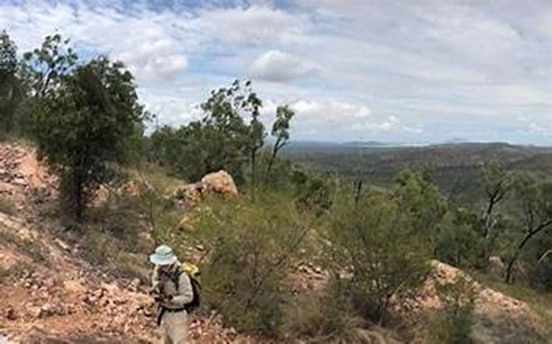
Gold and base metals exploration in Southern Ethiopia greenstone belts
- Dawa Digati Gold and base metal project, Megado Gold and base metal project, Blubul Hager- Maraiam Gold and base metal project, GSE, conducted integrated geological geochemical and geophysical survey to find geld potential areas for further resource assessment.
- July 1988-June 1991, Ababa River Basin Gold and Rare Metal Exploration Project conducted reconnaissance and follow-up geochemical survey for gold and rare metal elements exploration in Ababa River, Girja locality, near Kibremengist, Sidamo Province, Southern Ethiopia.
- June 2010 to August 2012 June 2010, Ethio Gibe Canada Mining PLC has carried out regional Follow up and semi detail exploration soil and litho-geochemical survey at Dawa and Moyale areas.

B. Non Metallic Minerals Exploration Projects
Industrial and construction minerals and rock resources occur in more diversified geological environments, including the Proterozoic basement rocks, the Late Paleozoic to Mesozoic sediments and recent (Cenozoic) volcanics and associated sediments.
Energy resources (oil, coal, geothermal resources) are restricted to Phanerozoic basin sediments and Cenozoic volcanism and rifting areas.
Non-Metallic Mineral and Rocks Exploration Projects
- July 2006-July 2008: Baya Gundi Gemstones Exploration Project, Baya Gundi Locality, Guji / Borona Zone, Oromia National Regional State.
- January2004-June2006: Adola Ceramic & Refractory Raw Material Exploration Project, in Shakisso wereda, Guji Zone, Oromia National Regional State
- 2007 – 2017, Jema International Consulting plc , Exploration and feasibility study for Cement raw materials study in Dejen area for Derba and Goro Mako & Qunde Garasu areas limestone and gypsum and Holeta for clay resources to ensure the presence of sufficient resources for the establishment of Derba and Habesha Cement Manufacturing Plants.
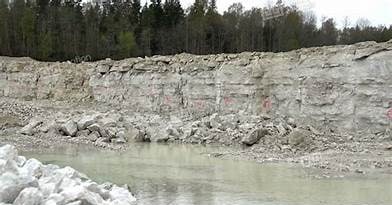
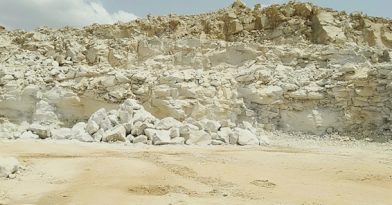
Tirakmiti Gold and base Metal Exploration Project
Harvest Mining PLC has requested consultancy for a comprehensive gold and base metal exploration project covering 521.2 square kilometers in the Adi Nabrid area, encompassing the localities of Adi Nabrid, Tirakimiti, Igub, Hamlo, and Nefasit. The exploration activities include litho-geochemical surveys, geological mapping, trenching, rock and channel sampling, and core drilling specifically at the Tirakimiti locality. Additionally, ground magnetics, Induced Polarization (IP), and Time-domain Electromagnetic (TEM) geophysical surveys have been conducted to provide detailed insights into the mineral potential of the area.
The results of these extensive exploration efforts have been promising. Significant findings include Gossaniferrous sulphide deposits at the Adi Angoded and Nefasit localities, and a Volcanogenic Massive Sulphide (VMS) deposit at the Tirakimiti locality. These discoveries highlight the area’s substantial mineral wealth and potential for future mining development, setting a strong foundation for further exploration and resource evaluation by Harvest Mining PLC.
Water Work Projects
Groundwater Investigation for Borehole Siting for Nutrafrica Agroindustry
Hydrogeological and geophysical water well siting survey was carried out in the premises of Nutrafrica Agro industry and Food Processing Plc located at Bishofetu area in 2012. The survey was intended to locate water well drilling site favorable for groundwater development to supply water for factory consumption.
The aquifers of the plain nearby the study area (Ada’a plain) include lacustrine sediments, scoria, scoraceous basalt and vesicular basalts (volcanic aquifers). The thickness of lacustrine sediment can reach up to 100m, underlain by scoraceous basalt. The lacustrine sediments show a lot of differences in their permeability, those showing the highest permeability are the ones consisting of volcanic sands, water lain volcanic sands (such as those around Debre Zeyt and Metehara).
Based on the mapping wells drilled and compilation of geological and hydrogeological information, WWDSE (2008 and 2009) was able to identify only one aquifer system. In general the result displays promising groundwater potential at a relatively deeper depth. The interpretation results of the sounding is indicating a potentially water bearing zone of unconfined and confined aquifer which may start from shallower depth and ends at 80 meter. The deeper water bearing layer may extend up to a depth of 100m below the surface and expected to give sufficient and safe yield ground water. Decision of the maximum depth can be also made during drilling as per the litological analysis and the yield of the well.
Groundwater Investigation for Borehole Siting for Tal Flowers Farm
Our team has taken the assignment from Yihedego Teklab Water Wells Drilling and Clearing General Construction to provide Hydrogeological and geophysical water well siting survey for well siting for Tal Flowers Farm in 2012. The project was carried out on in the area near to the farm of Tal Flowers located at Sebeta area, Oromia Regional State. The survey was intended to locate water well drilling site favorable for groundwater development. The main objective of the project is to conduct hydrogeological and geophysical investigation ultimately to select appropriate water well drilling site and depth for the farm’s consumption. The aquifer of the map area is largely formed due to processes related to lava flow and tectonic fractures and weathering.
The aquifer is formed by lava flows, tectonic fractures, and weathering, with key rocks like rhyolites, trachytes, basalts, and pyroclastics. Geo-electricity techniques, especially electrical resistivity surveys, were used to measure subsurface conductivity. Data was analyzed using IPI2WIN software to determine layer parameters. The findings indicate promising groundwater potential at depths up to 100 meters, expected to provide sufficient and safe yield.
The Tarmaber area and the surrounding Integrated Landslides investigations project
The purpose of Tarmaber landslide project is to identify exiting Landslide hazard condition of the Tarmbaber Debresina area and understand processes involved in the slope instability of the area. The area is located 200 km north east of Addis Ababa on the main asphalt road to Desse. The project in the previous year has been mainly devoted to preliminary mapping of geological conditions (lithological, geologic structures, engineering geological, hydrogeological) mapping. In the second part of the project in 2011, selected landslide hazard sites have been investigated as closely as possible.
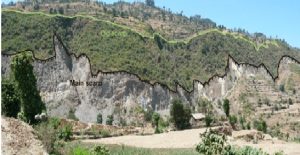 The occurrences of the slope instability pose great danger to both this major corridor and extensive agricultural fields in the district. Identified separate landslides were closely inspected with respect to groundwater condition, rock coherence, topography, land use practice, and engineering geological properties of the various units inside the landslide body. Additionally geometric configuration of the landslide bodies have been attempted to be inferred following the guidelines of technical experience gained from the Abay Gorge landslide project underway with Japanese experts. Representative samples of the various lithologic and rocks and soil samples inside the landslide bodies have been conducted to retrieve physical parameters for stability analysis. Most of the landslides are found to be complex type involving multiple types of landslides and of deep seated landslide that require long term counter measure mechanisms to cope with. There have been rotational, debris flow, rock flow, and mud flow types encountered in the field. Most of the landslides are seasonally controlled, occurring after rainy period and on rapid rate. Nevertheless, the field work was complimented with on site appraisal of possible local remedial measure to reduce progress of the landslide using local technology or method.
The occurrences of the slope instability pose great danger to both this major corridor and extensive agricultural fields in the district. Identified separate landslides were closely inspected with respect to groundwater condition, rock coherence, topography, land use practice, and engineering geological properties of the various units inside the landslide body. Additionally geometric configuration of the landslide bodies have been attempted to be inferred following the guidelines of technical experience gained from the Abay Gorge landslide project underway with Japanese experts. Representative samples of the various lithologic and rocks and soil samples inside the landslide bodies have been conducted to retrieve physical parameters for stability analysis. Most of the landslides are found to be complex type involving multiple types of landslides and of deep seated landslide that require long term counter measure mechanisms to cope with. There have been rotational, debris flow, rock flow, and mud flow types encountered in the field. Most of the landslides are seasonally controlled, occurring after rainy period and on rapid rate. Nevertheless, the field work was complimented with on site appraisal of possible local remedial measure to reduce progress of the landslide using local technology or method.
I. Capacity Building Projects
Our team has been engaged in capacity building of the Extractive Sector in Ethiopia. The Projects were very critical touching up on areas such as Legal and institutional framework for contracts and licensing; Geological and mineral information systems; fiscal regime and revenue management; linkages; investment and diversification; and formalization of Artisanal & small-scale mining. These issues are covered under various development projects where our team plaid crucial role in the Planning and implementation as team leads and/or Project Managers.
The outcomes of these Projects have strengthened institutional and human capacities at Ministry of Mines, Geological Survey of Ethiopia, Regional Mining Bureaus and selected Universities which also built confidence among government, donors and other stakeholders that similar initiatives can be replicated by local experts. These projects have been requested by some African countries that have faced challenges in the sectoral governance and revenue management and administration of ASM mining.
Supporting the Ministry Of Mines Project (2016 - 2020):
This is a 15 Million CAD, large scale development assistance project funded by Global Affairs Canada implemented jointly by Ministry of Mines and Canadian of Resource Development Institute (CIRDI) focused on the legal, regulatory and administrative framework and management of geosciences of the mining sector.
Strengthening Education for the Mining Sector (STEM) Project (2017-2020)
is a $12.5 Million CAD, technical assistance sponsored by the Government of Canada and implemented by Agri Team Canada. STEM project is designed to support these important initiatives and is focused on strengthening key university undergraduate programs in areas of geology and mining engineering, as well as enhancing Technical and Vocational Education and Training (TVET) within high priority occupational areas to meet sector demands and improve equal employability opportunities for both men and women so they can maintain sustainable livelihoods
Development of Local Content Policy Framework for Mining Sector (2021):
This Project forms part of a Technical Assistance program provided by the African Development Bank to the Ministry of Mines and Petroleum of the Federal Democratic Republic of Ethiopia (FDRE). The study involved essential series of high-level discussions and research on the need to develop a robust framework to enable the minerals and mining sector to play a critical role driving the country’s industrialization process.
Development of Local Content Policy Framework for Petroleum sector (2021) :
This study was funded by African Development Bank and had two objectives: to develop a framework which will guide the design and implementation of a petroleum sector local content policy approach in Ethiopia and to conduct a high-level capacity survey of Ethiopia’s Petroleum and linked sectors to identify those industries that can produce inputs as well as skills needed for the sectors.
Extractive Sector Capacity Building Projects
Our team has also been engaged in capacity building projects of the Mining Sector in Ethiopia. The Projects were very critical touching up on areas such as Legal and institutional framework for contracts and licensing;

Geological and mineral information systems; fiscal regime and revenue management; linkages; investment and diversification; and formalization of Artisanal & small-scale mining. These issues are covered under various development projects where our team plaid crucial roles in the Planning and implementation as team lead and/or Project Managers.
These projects have also been requested by some African countries who are facing similar challenges in the sectoral governance, revenue management and administration of ASM mining.
Supporting the Ministry Of Mines Project (2016 - 2020):
This is a 15 Million CAD, large scale development assistance project funded by Global Affairs Canada implemented jointly by Ministry of Mines and Canadian of Resource Development Institute (CIRDI) focused on the legal, regulatory and administrative framework and management of geosciences of the mining sector.
Strengthening Education for the Mining Sector (STEM) Project (2017-2020)
is a $12.5 Million CAD, technical assistance sponsored by the Government of Canada and implemented by Agri Team Canada. STEM project is designed to support these important initiatives and is focused on strengthening key university undergraduate programs in areas of geology and mining engineering, as well as enhancing Technical and Vocational Education and Training (TVET) within high priority occupational areas to meet sector demands and improve equal employability opportunities for both men and women so they can maintain sustainable livelihoods
Development of Local Content Policy Framework for Mining Sector (2021):
This Project forms part of a Technical Assistance program provided by the African Development Bank to the Ministry of Mines and Petroleum of the Federal Democratic Republic of Ethiopia (FDRE). The study involved essential series of high-level discussions and research on the need to develop a robust framework to enable the minerals and mining sector to play a critical role driving the country’s industrialization process.
Development of Local Content Policy Framework for Petroleum sector (2021) :
This study was funded by African Development Bank and had two objectives: to develop a framework which will guide the design and implementation of a petroleum sector local content policy approach in Ethiopia and to conduct a high-level capacity survey of Ethiopia’s Petroleum and linked sectors to identify those industries that can produce inputs as well as skills needed for the sectors.
